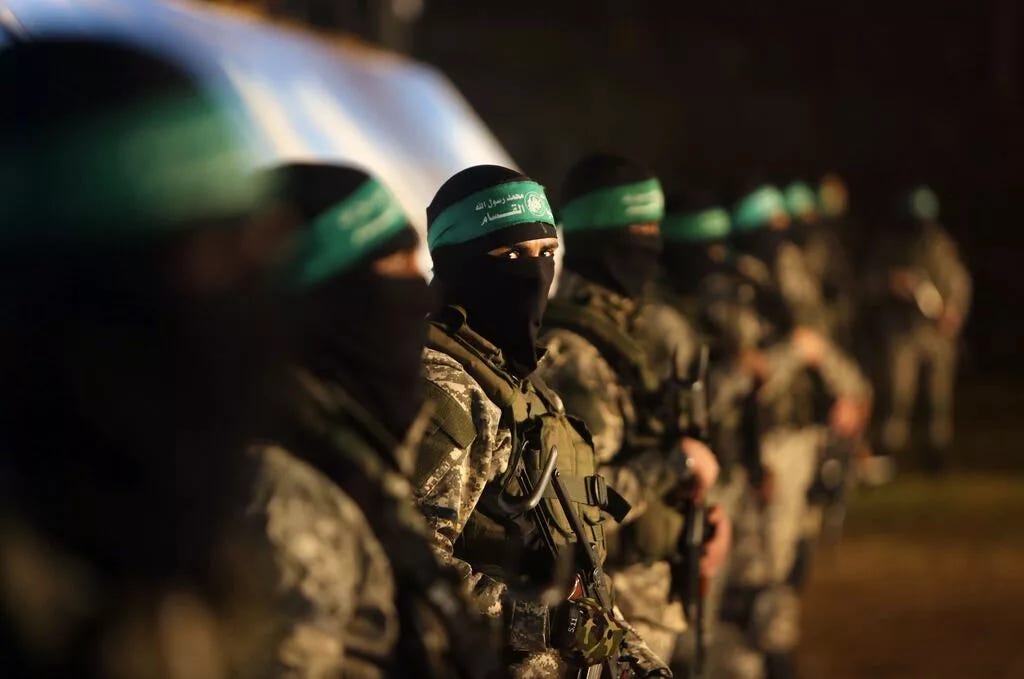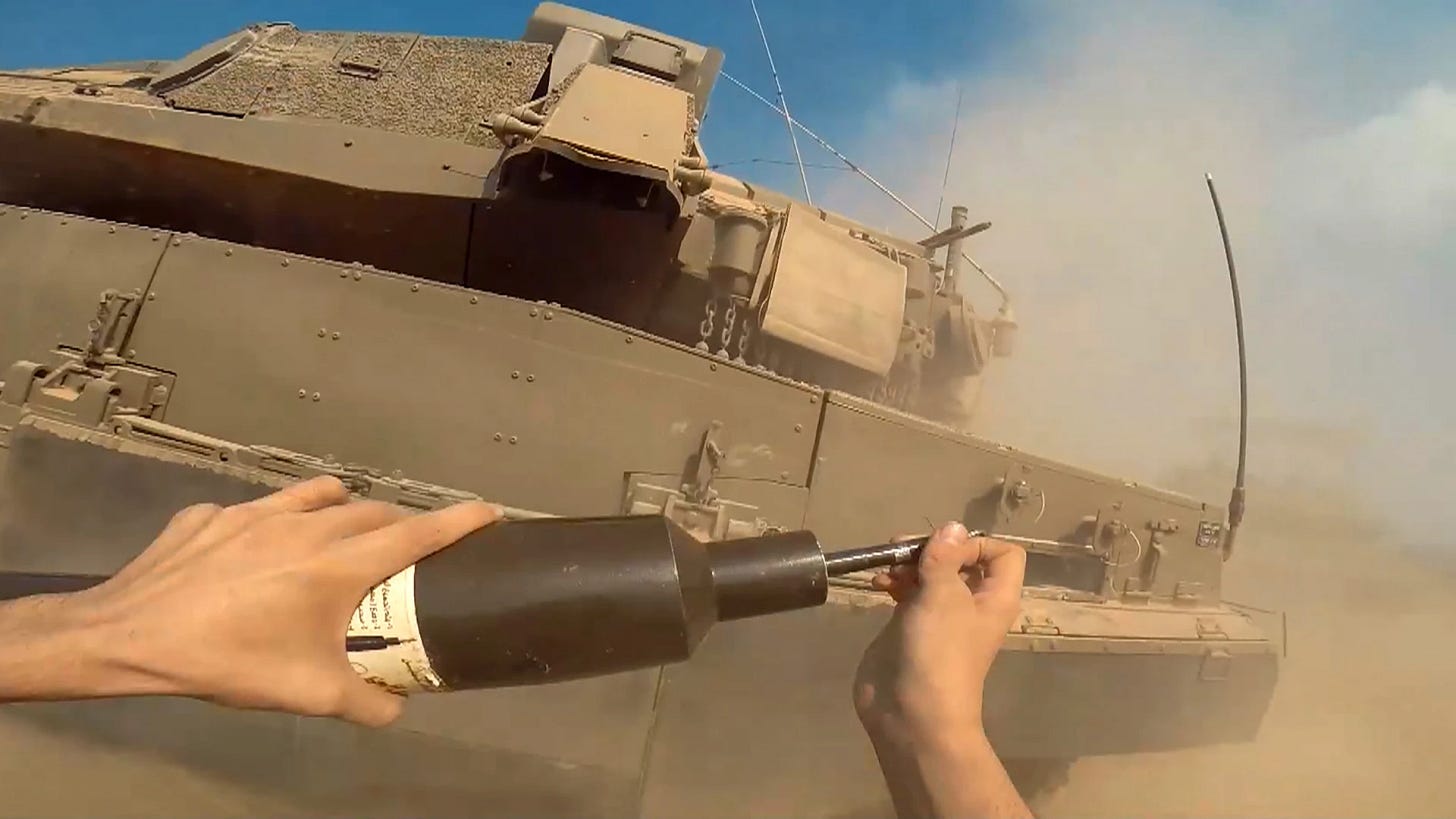The Palestinian resistance in Gaza has demonstrated a unique tenacity in withstanding the military might of the Israeli occupation. Its armed infrastructure has sustained ongoing operations—whether resisting ground incursions or launching continuous rocket strikes.
Over the past year and more, this has manifested in a remarkable display of resolve and operational capability. Gaza’s environment poses an extraordinary challenge: its topography is exposed and “scorched,” severely limiting the scope for conventional maneuver warfare.
Added to that, the territory is under constant Israeli intelligence surveillance—radars, advanced monitoring systems, satellites, and state‑of‑the‑art drones.
Faced with these constraints, the resistance devised creative defensive methods tailored to reality. Its strategy focuses on absorbing major assaults—especially intense aerial bombardments—inflicting maximum damage on invading forces while minimizing loss of personnel and equipment.
To this end, it avoided fixed defense lines and instead relied on mobility and concealment to disrupt enemy advances. On the ground, the resistance drew lessons from urban warfare worldwide and adapted them to Gaza’s environment and the nature of the Israeli military.
It developed a comprehensive strategy comprising four interconnected pillars: military squads, combat nodes, tunnel networks, and a closed terrestrial communications network. Simultaneously, it invested in human capital—training individuals capable of navigating operational complexity with maximum battlefield effectiveness.
Urban Warfare & Asymmetric Conflict
In his 1975 study “Why Big Nations Lose Small Wars,” published in World Politics, American political scientist Andrew Mack provides a critical analysis of asymmetric warfare. Until World War II, military doctrine assumed that technological and conventional superiority would automatically yield victory.
But later dramatic conflicts—including the Vietnam War and various Third‑World conflagrations—revealed the fragility of this assumption. Despite massive power, superior forces repeatedly suffered humiliating defeats when facing weaker, home‑grown adversaries.
These experiences shattered the traditional war concept, especially when major armies engage in conflicts outside their homelands. In such scenarios, powerful militaries often confront local forces motivated by diverse causes and prepared for protracted, unconventional engagements that defy standard military paradigms—this is the essence of urban warfare.

Urban combat stands as the most complex and brutal form of irregular warfare. It drains attacking armies through intricate use of civilian environments. Engagements span streets and buildings, confusing conventional forces reliant on technological dominance and standard tactics.
Especially troublesome is the proximity of “zero‑distance” combat, which neutralizes air support and technological advantages.
In Gaza’s case, the Telegraph reported that “Palestinian resistance took some common urban defensive tactics and elevated them to a level no one had ever seen,” citing U.S. West Point urban‑warfare expert John Spencer.
Gaza, he asserted, is “one of the most difficult urban battles in history,” comparing it even with Mosul or Stalingrad.
Spencer noted that the resistance had “15 years to prepare for this moment,” dedicating itself to “turning every inch into a problem for the world’s best army” .
From Militia to Army‑Like Structure
Drawing on experiences from Gaza's 2008 and 2014 engagements—and earlier during the Second Intifada when operations originating from Israeli settlements inside Gaza taught hard lessons—the resistance has methodically studied Israeli military maneuvers and adjusted plans accordingly.
It anticipated the possibility of a full reoccupation, even if that appeared unlikely at times, based on shifting Israeli political dynamics, the persistent siege, and periodic rounds of violence.
In recent years, the resistance has expanded recruitment, firepower, and organizational depth—evolving into a small, integrated army. The Izz al‑Din al‑Qassam Brigades, Gaza’s main military force, structurally resemble a conventional army.

They now feature hierarchical command, specialized weapon systems, engineering, armor, artillery, and elite units. This has enabled precise operations under extremely challenging conditions.
Yet, they have retained the decentralized, non‑state militancy that makes them elusive and agile. By fusing the strengths of conventional small armies and militia fluidity—with enhanced technical, logistic, and intelligence capacities—they maintain surprise and resilience while minimizing vulnerabilities.
Gaza’s densely populated built‑environment also serves as a natural defense, complicating conventional maneuverability and amplifying the resistance’s leverage on urban terrain.
The Defensive Square Strategy
The resistance’s defense doctrine revolves around a four‑pillar “square”—each reinforcing the others to create one of the most complex modern urban‑war models:
Military Squads
Small, flexible tactical units (5–10 fighters), each led by a commander and selected for specialized roles: armor specialists targeting tanks, combat engineers placing explosives, snipers providing cover, communications officers maintaining encrypted links, and even media specialists documenting operations for morale and narrative purposes.
Combat Nodes
Fortified positions hosting coordinated units to execute tactical objectives. These nodes blend defense and offense, optimized to exploit their geographical advantages. Some nodes have remained in position for months—such as the al‑Barra ambush in Tal al-Hawa—for planned Israeli incursions. Nodes may operate independently or in sync with others during complex operations.
Tunnel Network
A vast underground system spanning tens of kilometers, invisible to Israeli intelligence and used for defense, offense, command and control, communications, resupply, launch sites, and protection of high‑value assets.
Defensive tunnels enable movement, ambushes, and strategic withdrawal.
Offensive tunnels penetrate into enemy territory, enabling surprise attacks (used extensively during the October 7, 2023, operations).
Command tunnels house reinforced command centers.
Communications tunnels carry secure wired networks.
Resupply tunnels connect rocket and mortar sites to ammunition and logistics.
Secure tunnels protect key prisoners and leadership in hardened, isolated zones.
Foreign Affairs columnist Daphne Richmond Barr noted that Hamas’s tunnel usage is “more akin to how states use subterranean structures to protect command centers than is typical for non-state actors” .
Closed Terrestrial Communications Network
A secure, buried cable system independent of Israeli electronic surveillance. It links combat nodes, command centers, intelligence cells, media, rocket, and artillery units. Israel’s 2018 failed Sayeret Matkal operation in Khan Younis intended to sabotage this network by planting listening devices; instead, the network remained intact and operational, even under repeated electronic and aerial attack—notably during the 2018 mission .
Risk Management & Decentralized Leadership
Understanding the dangers of centralized logistics or command, the resistance decentralized arms depots horizontally across Gaza—each brigade, battalion, and squad maintains its own weapons cache and supply line. This thwarted attempts to neutralize the structure via targeted air attacks.
They also invested heavily in human training, cultivating multi-tiered leadership. Squad commanders receive extensive training to make independent tactical decisions if communications are severed from top command. This turned each cell into a self-sufficient operational unit.
The Qassam Brigades established training academies with comprehensive curricula—military, strategic, doctrinal, ideological—that also groomed strategic thinkers to bridge leadership gaps, as revealed by leaked Israeli intelligence .
These measures preserved operational continuity despite leadership strikes, keeping units functionally in sync. The result: capabilities that outmatched expectations against a technologically dominant military force.
Gaza Redefining Urban Warfare
Gaza’s military experience, particularly during the recent “Operation Al-Aqsa Flood,” showcased the resistance’s capacity to morph an exposed, surveilled terrain into one of the world’s most complex combat theaters. Its innovations—especially the tunnel network and decentralized command—are redefining urban warfare doctrine, revealing how non-state actors adapt to hostile, infrastructure-weak environments.
Reflecting Mao Zedong’s guerrilla maxim—“When the enemy advances, we retreat; when he camps, we harass; when he tires, we attack; when he retreats, we pursue”—the resistance has consistently avoided direct engagement on the enemy’s terms, embracing Andrew Mack’s core rule: “Rebel forces should refuse to fight conventional armies according to the latter’s rules; instead on their own terms and terrain.”
A RAND report concluded that Israel’s operations since 2009 underscored the region’s strategic opacity—Gaza’s resistance has skillfully leveraged Israel’s political and economic strains, evolving Gaza into a model for unconventional warfare .
Foreign Policy observed that Gaza’s tunnel network “has diminished the significance of surface operations… slowed the tempo, complicated rescue efforts…”—something Israeli military intelligence chief Tamir Hayman called “the toughest war in Israel’s history”—citing how resistance forces are entrenched both above and below ground .
Ultimately, Gaza's conflict will be remembered as a defining case in asymmetric urban warfare. The resistance converted extreme challenges into strategic advantages, establishing a new paradigm in confronting superior armies—not only Israel’s but any technologically dominant military.
This unique experience stems from leaders forged in a crucible of siege and conflict: fighters with locally manufactured weapons, tunnels dug by bare hands, secure wired communications, strategic minds, and unwavering determination. At its core lies a profound moral dimension—a level of sacrifice and dignity that continues to inspire oppressed peoples worldwide.





